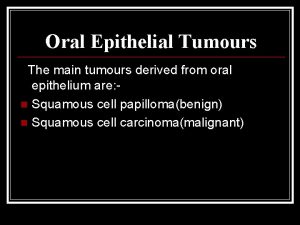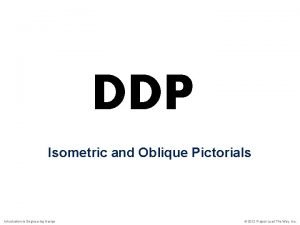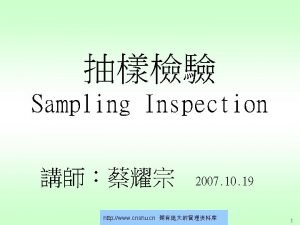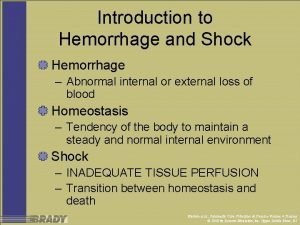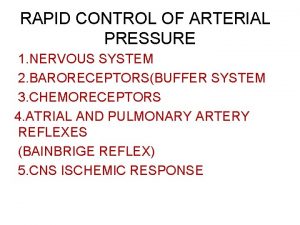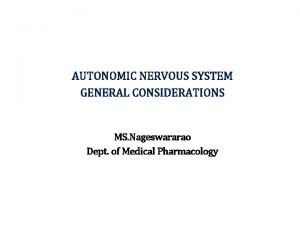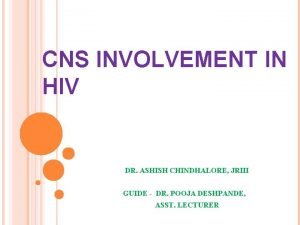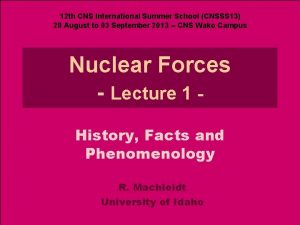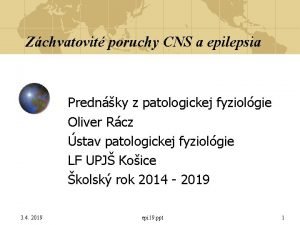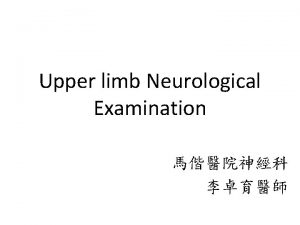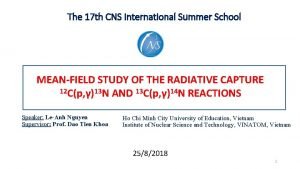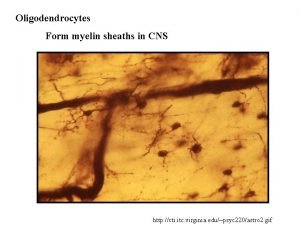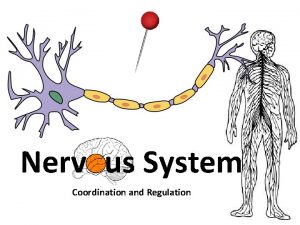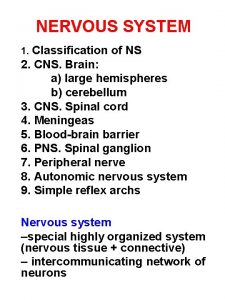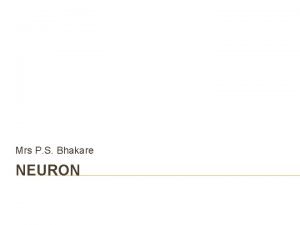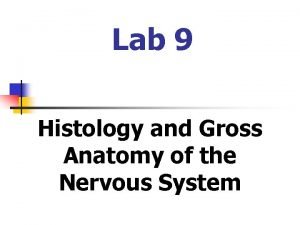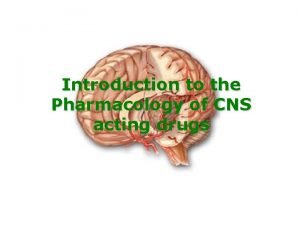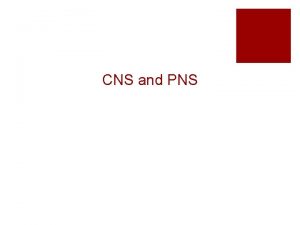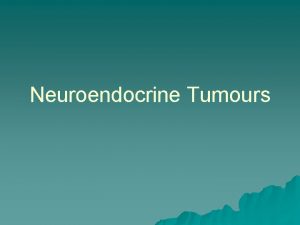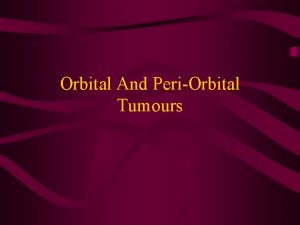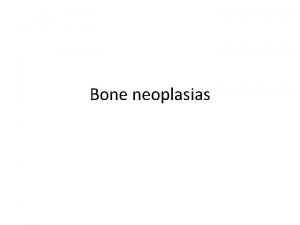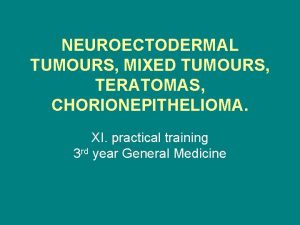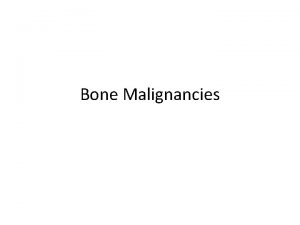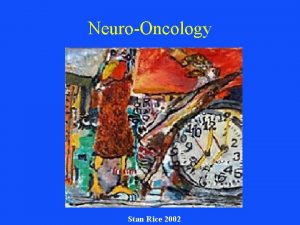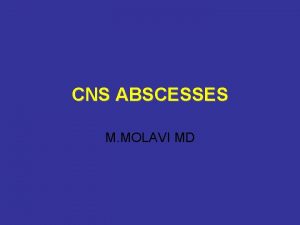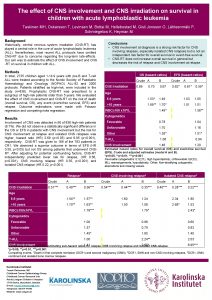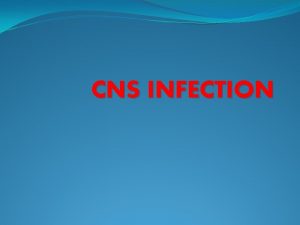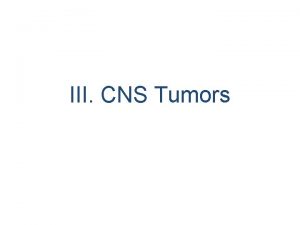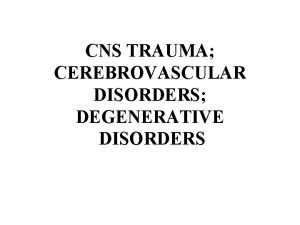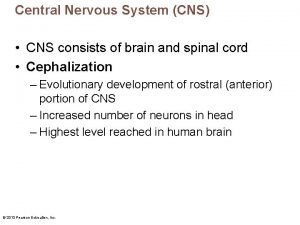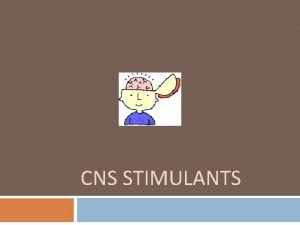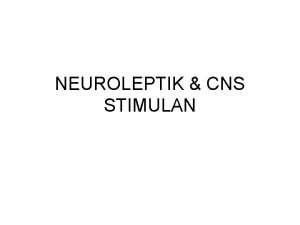Pictorial lesson in CNS Tumours Dr H K





























- Slides: 29

Pictorial lesson in CNS Tumours Dr H. K. Lord

Anatomy Reminder

u Malignant Brain Tumours

Glioma – Grading of Tumours

Diffuse low-grade astrocytoma u Axial T 1 weighted MR image after gadolinium administration. u A large left temporal tumour is present without any abnormal enhancement. u The tumour is evident through its obliteration of normal sulci and gyri.

Diffuse low-grade astrocytoma u Axial T 1 -weighted MR image after gadolinium enhancement. u Tumour is seen in the deep temporal region abutting the brainstem u The temporal and occipital horns of the left lateral ventrical are dilated due to ex vacuo changes related to intervening treatment.

Diffuse, low-grade astrocytoma u Coronal section shows a tumour diffusely infiltrating the right frontal lobe. u Gross determination of the tumour's boundaries is almost impossible, but the tumour is evident as an illdefined area of enlargement with loss of distinction between the gray and white matter.

Diffuse, low-grade astrocytoma u In the white matter, there is a subtle infiltration of astrocytes with only slightly irregular features.

Anaplastic astrocytoma grade III/IV u Axial T 2 -weighted image at the level of the upper portion of the lateral ventricles. u A large cystic tumour is present on the left with relatively little surrounding oedema The tumour shifts the midline to the right

Anaplastic astrocytoma grade III/IV u Microscopy reveals a densely cellular tumour with a high degree of cellular pleomorphism and increased mitotic activity. u This tumor is distinguished from glioblastoma multiforme by the conspicuous absence of necrosis and endothelial proliferation. u However, its high cellularity and pleomorphism raise suspicion that a larger sample size might have included areas exhibiting features of greater malignancy

Two pathways to glioblastoma u Glioblastoma can develop over 510 years from a low-grade astrocytoma (secondary glioblastoma) u Or it can be the initial pathology at diagnosis (primary glioblastoma). u The clinical features of glioblastoma are the same regardless of clinical route.

GBM u Axial T 2 weighted MR image. u The rounded tumour mass in the left frontal region is seen with extensive surrounding vasogenic oedema extending along white matter tracts.

GBM Pathology u Highly pleomorphic neoplastic cells, including giant cells, gemistocytic astrocytes and small anaplastic cells. u Also typical are mitotic activity, proliferation of blood vessel endothelium and zones of necrosis.

u Benign CNS Tumours

Meningioma u A large convexity meningioma severely displaces the underlying tissue downward and laterally, creating a midline shift and marked ventricular compression.

Meningioma u Whorl formation is often a valuable diagnostic feature. The whorls may be quite prominent, with cells tightly wrapping around one another in an 'onion-skin' pattern.

Craniopharyngioma u The tumour may grow, extending into the third ventricle as in this midsagittal section, where a massive tumour fills the third ventricle. u Benign growth from Rathke’s pouch

Craniopharyngioma u Lateral skull radiograph demonstrates the radial calcifications of a large, suprasellar tumour.

u Secondary CNS Tumours

Metastatic spread u Metastatic lung adenocarcinoma. u Osseous metastases have expanded and destroyed several cervical vertebrae, with consequent flattening and distortion of the spinal cord. The subdural space was free of tumour

Metastatic disease u Metastatic breast carcinoma. u The dura of this specimen has been reflected to reveal multiple subdural metastatic deposits. u Note the lack of discernible infiltration of the subjacent brain by tumour.

Systemic non-Hodgkin's lymphoma involving the CNS. u u u Granular, hemorrhagic epidural and subdural tumour deposits. On microscopy, there would be extensive infiltration of the dura, with a large, subdural accumulation of tumour. Morphologic and immunophenoty pic studies were diagnostic of a B -large cell lymphoma.

u Childhood CNS Tumours

Optic nerve astrocytoma u CT scan of a 2 year-old girl with proptosis shows a large pilocytic tumor surrounding and involving the right optic nerve.

Optic nerve astrocytoma u Surgical specimen consisting of the globe and optic nerve from a 5 -year-old girl with neurofibromatosis shows the tumour as a fusiform enlargement of the nerve.

Olfactory neuroblastoma u CT scan in a 19 year-old boy shows a mass filling the left nasal cavity. u These tumours may grow either downward to fill the nasal cavity or upward through the cribriform plate to enter the cranial vault.

Medulloblastoma. u Axial T 2 -weighted MR image at the level of the fourth ventricle. u A large heterogeneous mass is present in the right cerebellum which compresses and displaces the fourth ventricles, in keeping with a medulloblastoma

Rhabdomyosarcoma. u In this specimen from a child, the tumour involves the pineal region and is associated with diffuse leptomeningeal seeding.

More Info u More information available from: i) Clinical SSC in Neuro-Oncology – Dr HK Lord ii) http: //www. braintumouraction. org. uk iii) http: //www. cancerresearchuk. org/
 Tumours
Tumours Oblique pictorial view
Oblique pictorial view C=0 sampling plan
C=0 sampling plan Naas cns
Naas cns Cns ischemic response
Cns ischemic response Cns histology ppt
Cns histology ppt Composition of cns
Composition of cns Cns ischemic response
Cns ischemic response Mean arterial pressure
Mean arterial pressure Bainbridge reflex
Bainbridge reflex Www.lispa.it cns
Www.lispa.it cns Ans and cns difference
Ans and cns difference Cns depressants ppt
Cns depressants ppt Tuberculomas
Tuberculomas Depresori cns
Depresori cns Cns international school
Cns international school Cns poruchy
Cns poruchy Muscle power neurological examination
Muscle power neurological examination Cns and sns
Cns and sns Cns summer school
Cns summer school Sensory system
Sensory system Cns ward
Cns ward Cns
Cns Picture of central nervous system
Picture of central nervous system Structure of the reflex arc
Structure of the reflex arc Classification of cns
Classification of cns Soma cns
Soma cns Soma cns
Soma cns Classification of cholinergic drugs
Classification of cholinergic drugs Cns educar
Cns educar
